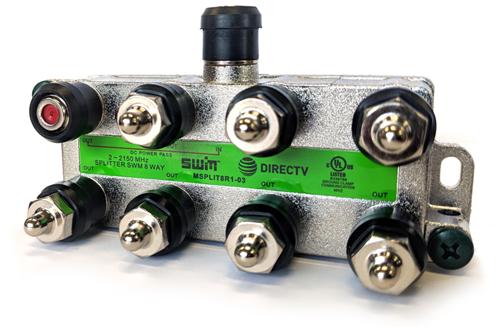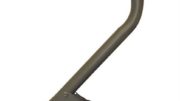When you use a typical 8-way splitter, you’re cutting the signal level by about 14dB. This is actually equivalent to losing something like 96% of the raw signal level. Now, it’s not as bad as it sounds since digital signals can be pretty weak and still work. But use two 8-ways in a row and you might find there isn’t enough signal for your equipment to work. This is especially true with satellite but even with over-the-air antennas, oversplitting can be a real problem.
Here’s the basic problem
See, there’s this pesky little theory called “conservation of energy.” It says that you can’t create new energy and you can’t get rid of energy. You can only transform it from one type to another. This is going to get a little heavy, so follow along:
On Earth, all our energy originates from the sun. The sun’s energy comes to us and it’s stored several ways. Plants absorb it and eventually die and after millions of years turn into coal. Or, animals eat the plants, eventually die, and are turned into oil. On a shorter time scale, the sun heats up air which makes it move. This creates weather which powers hydroelectric generators and wind farms. It also allows solar cells to collect a small fraction of the energy that hits them and turn into electrical power.
Satellites use solar cells to gather energy which is used to transmit signals to earth, and broadcast towers on earth pull energy from the electrical grid to create over-the-air television signals.
On the way to your home, most of the energy that’s sent from satellites and broadcast towers dissipates into the air and is lost. Amazingly, though, there’s enough to give you great TV signal. Up to a point.
TV signals are weak by the time they get to you.
When a signal gets to you, it can be 1/100,000th as strong as it started out but believe it or not that can be all it takes. Using just thousandths of a watt, TV signals can travel through cables and be decoded which gives you the picture and sound you enjoy. However, it is possible that these signals are so weak that they can’t be decoded. When this happens you get picture freezes and lost signal messages.
So, getting back to splitters…
The point of all of this is to say that you can’t ever get back energy when you’ve lost it. In some cases you can add an amplifier which puts more energy in, but since energy on Earth is never truly created or destroyed, you can’t magically have energy there if it wasn’t there.
And that’s the point. If you use an 8-way splitter, you’re splitting the energy of that TV signal 8 ways. And when you split it 8 ways, each output only gets one-eighth of the original energy. Another way of saying “one-eighth” is “-12dB.” Here’s a tutorial to try to explain dB if you would like. So, no matter what, an 8-way splitter is always going to lose 12dB. It’s impossible for it not to. You could add an amplifier but the native loss of that splitter is always going to be at least 12dB. There’s no way around it.
Yeah but you said the splitter usually loses 14dB. What’s up with the other two?
Yes it’s true. Generally an 8-way splitter will lose 14dB. It’s common whether it’s the least-expensive or most-expensive splitter. You lose about .5dB for each connection you make because of the imperfect way the electricity travels through the connector. There’s an input connection and an output connection. That means there’s 1dB lost just to “insertion loss.” There’s also about .7dB lost in the fancy electronic pathways inside a splitter. Again this is something that’s practically impossible to avoid. So, the total loss ends up being about 14dB.

If you want to minimize the amount of loss you get, always use the smallest possible splitter. And, try to avoid stacking splitters one after another. Instead of putting one eight-way splitter on one of the output ports of another eight-way splitter, use a two-way splitter connected to two eight-way splitters. It will give you a signal that’s about 11dB stronger that way.
For the best splitters of course, you really should check out the great selection at Solid Signal.





